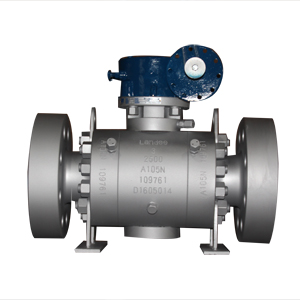The origin of valves, and the history of valves in China (part one)
Posted: 11/30/2018 14:06:59 Hits: 41
The development of valves is closely related to the development of industrial production processes. In ancient times, large stones and trunks were used to impede or change the direction of the flow of rivers or creeks. And as early as the end of the Warring States Period, Li Bing (whose birth and death are unknown), the governor of Qinshu County had already dug a salt well in the Chengdu Plain and used a bamboo-made valve for drawing brine.
The ancient Egyptians and Greeks invented several original valves for crop irrigation, etc. It is generally accepted that the ancient Romans invented and developed a rather complex crop irrigation system that used plug valves, plunger valves, and check valves to prevent water backflow.
During the Renaissance, in the design of the artist and inventor Da Vinci, valves were used in the canals, irrigation projects and other large hydraulic systems, and many of his technical solutions still exist. Subsequently, in Europe, the requirements for valves became gradually strict due to the development of technology and hydraulic machinery. Metal valves, like copper and aluminum plug valves were created in this time.
The modern history of the valve industry is in parallel with the industrial revolution. In 1712, Thomas Newcomen invented the first practical steam engine which put control requirements on the operation of the steam engine. From 1763 to 1776, James Watt improved the Newcomen engine, and valves, including plug valves, safety valves, check valves and butterfly valves used on steam engines, officially entered the mechanical industry.
Watt steam engine can be seen as the beginning of valves used for a large number of applications. From the 18th to the 19th century, due to the rapid expansion of steam engines in the mining, textile, machinery manufacturing and other industries, the number and quality of valves were improving at breakneck speed. Watt also invented the first controller to adjust speed, which could be used for regulating flow rate and became more and more important in the industry later. Globe valves with threaded stems and wedge gate valves with trapezoidal threaded stems that appeared successively are a major breakthrough in valve development. They not only met the increasing requirements for valves' pressure and temperature in various industries, but also meet the requirement for flow regulating.
The first valve in history can be dated back to the 19th century, by John Wallen and John Charpmen, in the form of ball valve, or spherical plug valve. But it was not put into production at that time. After the Second World War, the development of valves was carried out under the government's promotion. The US Navy was an early proponent of the James Bury valves for submarines. So a series of new developments and attempts were made around the scenes of valves, and new valve technologies were also revolutionized with the war.
Due to the need for post-war reconstruction in many countries, as well as the use of various materials, such as polymeric materials, stainless steel, cobalt base horniness alloy, plug valves and butterfly valves had new applications; ball valves and diaphragm valves evolved from plug valves had been rapidly developed; new types of globe valves, sluice valves and other valves were invented, the quality of which was also improved. The valve manufacturing industry had gradually become an important part of the machinery industry.

